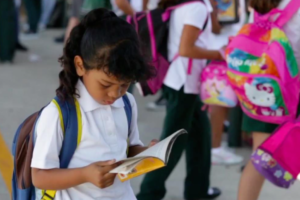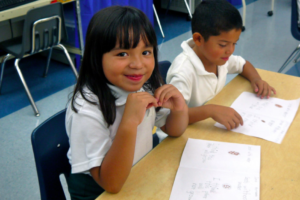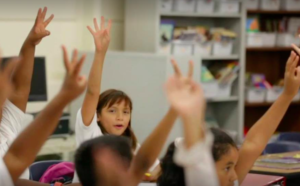In society today, students are more diverse in their languages, abilities, ways of learning, interests, skills, and cultures than ever before. Schools are melting pots, and increasingly, curriculums are becoming more responsive to students’ backgrounds, enabling creative, interdisciplinary, multicultural learning environments. Culturally relevant learning is a pedagogy that “empowers students intellectually, socially, emotionally, and politically by using cultural referents to impart knowledge, skills, and attitudes.” It is a student-centered approach to teaching where a student’s cultural understanding and place are nurtured in order to promote well-being, a sense of identity, and achievement. According to ASCD, the goal of culturally relevant learning is answering “how are we using the cultural capital available in our classrooms to capture attentions, engage students, and make curricula relevant?” 
Educators know students want to feel connected to not just who they are, but to their communities and the world at large, and culturally relevant learning is a way of providing that opportunity. In addition, “culturally sustaining pedagogy” is important, given that it encourages educators to preserve our multicultural, multilingual society, and “starts with being curious about and respectful of the cultures of the students we teach.” Chantell Moncur, of Newark Public Schools, said that “culturally relevant learning fits into real world learning by connecting in real time the beliefs of the culture. Teachers have to be aware and sensitive to the needs of the cultures that they service.” She also noted that students have the responsibility of “ being sensitive to the needs of the cultures within their school community. The connection between culturally relevant learning and real world learning would simply be choosing to respect each other’s cultural differences as a daily practice.” As we prepare for our annual STC Forum happening this week, we wanted to explore some examples of culturally relevant learning’s substantial connection to real world learning.

At South Bronx Community Charter School (SBC), the mission is promoting student excellence and a positive sense of self through the development of academic, personal, and professional skills in a responsive learning environment. SBC’s core values – empowerment, personalized learning, inclusion, cultural responsiveness, continuous growth, and collective responsibility – correspond with both culturally relevant learning and real world learning, demonstrating that the two are inextricably linked.

SBC notes that, at the school, “we value who our students are and believe in their right to explore and express their identities.” That’s a cornerstone of culturally relevant learning, particularly the idea that students have unique “customs, beliefs, and lived experiences” that they bring to the classroom and community. In these instances, students’ identities are part of their academic achievement, crafting an education that responds, develops, and includes the whole individual. Culturally relevant learning utilizes concepts like those put forth by SBC, including the fact that “students’ senses of place and perspective are reflected in content and pedagogy,” with instruction that “connects students to their heritage and expands access points to learning.” It recognizes the value of a student’s culture as a “vehicle for learning.”
It is worth noting that SBC grew out of Expanded Success Initiative, a research and development initiative focused on increasing positive outcomes of black and Latino male students who attend New York City Public high schools by closing the educational achievement and opportunity gaps. One of the core tenets of ESI is culturally responsive education, which the organization states “empowers students by respecting their identity and interests as central to the learning process.”
To ESI, this means acknowledging the importance of students’ cultural references and lived experiences in all forms of learning. They note that “identity affirms the need for self-understanding and is the basis for self-definition,” and that identity formation is perhaps one of the most significant academic, political, and social benefits of culturally relevant learning.
In addition to the identity formation necessary to being an engaged academic and civic-minded individual, benefits of culturally relevant learning include…
builds on what students already know and have experienced
helps students understand there is more than one way of knowing something
encourages students to embrace their culture, and subsequently, themselves
fosters a love of learning that is rooted in identity rather than simply subjects
highlights students’ unique strengths and encourages understanding of differences
creates a diverse environment
enacts different learning and teaching styles
identifies the intersections of classmates’ interests, passions, and experiences
enables students to take control of their own learning in a supportive atmosphere
encourages meaningful connections between educators, students, and families
As we move toward learning in the 21st century, culturally relevant learning is one of our most valuable chances to connect the experiences and identities of students to not just their educations, but to their future careers and lives as well.

